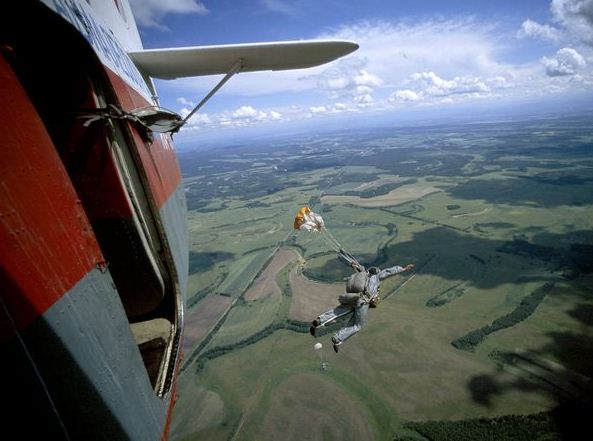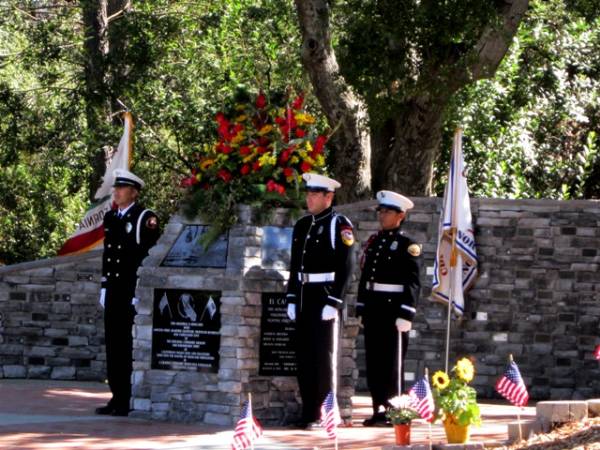
In 2002, two mid-air wing failures of large air tankers caused five deaths and resulted in the number of contracted air tankers being dramatically reduced by eliminating some of the oldest World War II era bombers that had been converted to air tankers. At that time we had 44. Today there are 11 on standard exclusive use contracts. Even after five studies since 1995 about the future of the air tanker fleet, the U.S. Forest Service still has not made a decision about the future of the program and how to reconstitute the fleet.
On May 19, 2011, the Chief of the Forest Service, Tom Tidwell, spoke on the issue in a Senate hearing:
[Senator Lisa] MURKOWSKI: What is the strategy for — for replacement of the aging air tanker fleet? And where do you see that going?
TIDWELL: Well, I was hoping to have that completed by now. But the RAND Corporation that’s doing the study for us have not completed their work. We’re hoping to get that here in the next month or so. And so once we receive that, that’ll probably be the last piece of information we need to move forward with our strategy.
Chief Tidwell was referring to the Rand Corporation study that was due in January, 2011. There are reports that the USFS has received it and it is heavy in its recommendations for scooper-type air tankers. But there is a strong bias against that type of air tanker within the higher levels of the USFS. So they are going to pay for still another study, probably hoping that this next one will give them the answer that they want. The USFS paid Rand $840,092. It is unknown what this next study will cost the taxpayers.
At another Senate hearing June 14, 2011, Chief Tidwell said:
In the next 10 years more than half of our large air tankers will need to be replaced and we are studying the options and will be making a recommendation to you by the end of the summer.
We are now well past the June-July and “end of the summer” deadlines promised by Chief Tidwell.
We submitted a Freedom of Information Act (FOIA) request on September 19, 2011 to obtain a copy of the Rand study, but we have not yet received it.
On September 23 we submitted some questions to the USFS about the future of the air tanker program. Yesterday we received the reply below from spokesperson Jennifer Jones.
Unfortunately, question number 6 was not answered. Is the USFS going to wait until this next report I’ll call “Rand Revisited” is received to make decisions about what recommendations to make to Congress? For such an important issue, and one that has languished for almost 10 years, it is inconceivable that the USFS still does not have a plan, or even a time line to develop one. Or, if there is a time line, why it is secret. Continued dithering and indecisiveness by the U. S. Forest Service is not acceptable.
The “answers” to our questions, as provided by the U. S. Forest Service, are in italics.
=================================================================
This web site, dated August 15, 2011, says the USFS intended to award a non-competitive contract to the Rand Corporation for another study, Rand’s second study, about the air tanker and helicopter situation.
Questions:
1. Is the amount of the contract $7 million? If not, what is the amount?
Due to the responses received expressing interest in this contract, the U.S. Forest Service decided to withdraw its sole source determination. A competitive acquisition will be conducted. There is no fixed amount for the contract. Bidders will submit prices and the price will depend on who is awarded the contract. Price is one of the factors that will be considered during the contract award process. There currently is no contract in place. The government develops an Independent Government Estimate that is used during the evaluation of cost proposals. The contract value will be identified at the time of contract award.
2. What are the deliverables, and what is the due date?
The deliverables are still being finalized and will be identified/included in the Statement of Work or the Specification that is included in the Solicitation. A due date will be negotiated with whoever is awarded the contract. Often times delivery due dates are identified in the Statement of Work or the Specification; however, it is also possible that the U.S. Forest Service may opt to allow interested offerors to propose delivery dates in their proposal or to negotiate with the successful offeror after award.
3. What was the product of Rand’s earlier contract to study the air tanker issue? Was their product satisfactory? If not, why not?
The product of the earlier contract included an evaluation and an analysis of the U.S. Forest Service aviation program to determine the optimum mix of helicopter and airtanker assets; a forecast of the agency’s future needs for these aviation assets; and a cost/benefit analysis of the helicopter and airtanker options. The product was satisfactory; however the final analysis requires refinement due to inadequacies in input data.
4. Why is another contract being awarded for this issue, right after Rand’s other contract?
Additional research is needed to assist the U.S. Forest Service in determining the appropriate composition of a mix of fixed-wing airtanker and helicopter/water scooper aviation assets that optimizes the public’s return on investments in wildfire suppression.
5, What was the amount of money paid to Rand for the earlier contract?
$840,092.00
6. When will the USFS make a decision about the long term management of the large air tanker fleet? It was promised by the end of the summer, 2011.
The U.S. Forest Service is committed to modernizing the Large Airtanker fleet. The agency is currently developing a strategy to modernize the Large Airtanker fleet in coordination with the U.S. Department of Agriculture, the U.S. Department of the Interior, and the Office of Management and Budget and plans to submit it to Congress as soon as it is completed.








